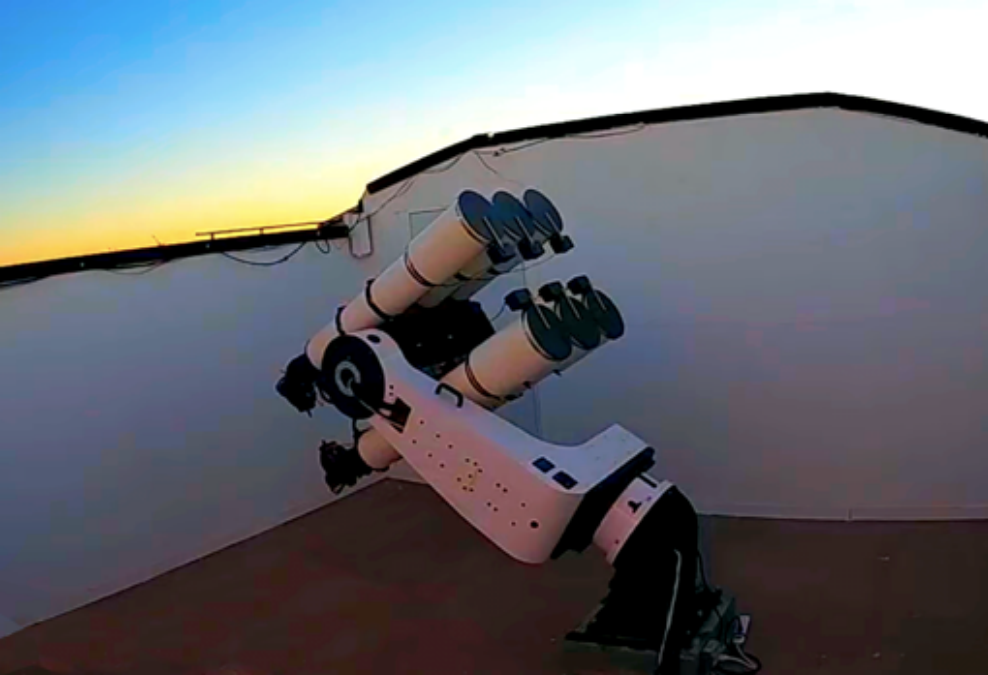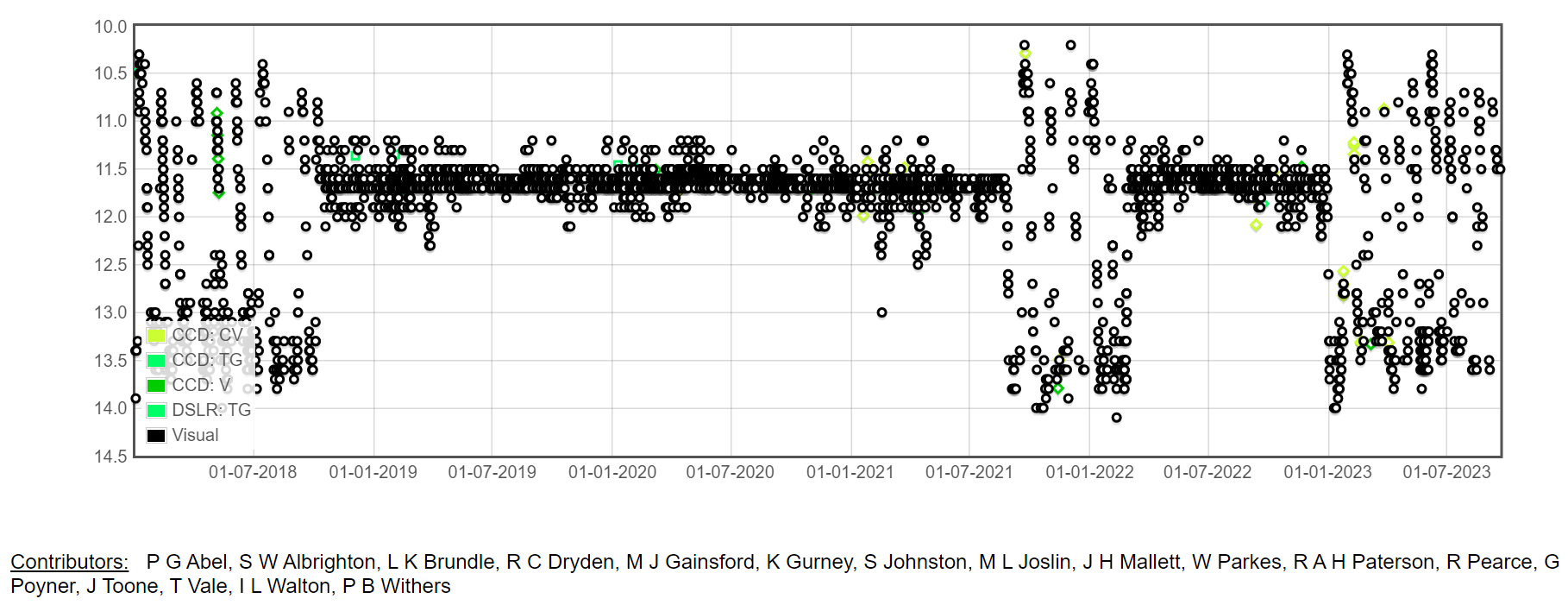Condor reveals a second eruption shell of the dwarf nova
2023 December 12
Z Cam is a cataclysmic variable star whose visual magnitude varies between 10 and 14. This system is the prototype for the family of Z Camelopardalis variables first proposed by past Variable Star Section (VSS) Director Félix de Roy. Dwarf novae in this family characteristically have long standstills at a brightness intermediate between their outburst maxima and minima. This behaviour can be seen in the accompanying BAA VSS light curve for Z Cam.


Z Cam is surrounded by an extensive gaseous shell ∼30 arcmin in diameter, thought to have been ejected in a nova explosion. It may be the same bright nova that was recorded by Chinese astrologers in the autumn of 77 BC. Further evidence for this identity was presented in a recent paper submitted to Monthly Notices of the Royal Astronomical Society.1 A team, led by Michael Shara (Department of Astrophysics, American Museum of Natural History, New York), used deeper images recently obtained with the Condor Array Telescope. Their work allowed the expansion rate of the shell to be measured with a greater degree of certainty than hitherto.
The team also identified a further, fainter, concentric shell which is some 80 arcmin in diameter. This would make Z Cam the first instance of a pair of concentric shells surrounding an old nova, representing the two most recent eruptions on the system’s white dwarf.
This shows the impressive capabilities of the recently inaugurated Condor project, located at the Dark Sky New Mexico observatory.2 By contrast to many of today’s huge telescopes, it is a relatively modest ‘array telescope’, made up of six 18cm refractors supplied by the Telescope Engineering Company (TEC) – each equipped with a large-format CMOS camera.
Z Cam is not the only old nova known to have metamorphosed into a dwarf nova. The best-known example is GK Persei (nova Per 1901), which began dwarf-nova outbursts 65 years after its nova eruption. Both Z Cam and GK Per are on the VSS observing programme and charts are available from the VSS website.3 Further observations of each are most welcome.
Jeremy Shears, Variable Star Section Director
1 Shara M. M. et al., Mon. Not. R. Astron. Soc., submitted (2023); the Monthly Notices submission is available at: arxiv.org/abs/2310.00123
2 Lanzetta K. M. et al., Publ. Astron. Soc. Pac., 135, 015002 (2023); for more information about the Condor Array Telescope, visit the project’s website: condorarraytelescope.org/
| The British Astronomical Association supports amateur astronomers around the UK and the rest of the world. Find out more about the BAA or join us. |
